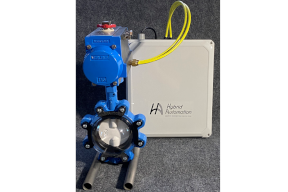Biden Executive Order 13990 directs the EPA to develop regulations to significantly reduce oil/gas producer’s methane emissions. EO 13990 identifies the conversion of pneumatic controllers to zero-emitting technologies, and the elimination of associated gas venting. This would regulate, for the first time, methane driven pneumatic actuators which vent methane directly to atmosphere.
Fugitive emissions of methane come from multiple sources within a valve automation package. Venting methane directly to atmosphere from methane powered pneumatics has been a common practice by producers for decades. This represents the largest source of fugitive emissions within an automated pneumatic valve package. Reducing methane releases to atmosphere from methane powered pneumatics will continue to be a contentious topic, regardless of who sits in the White House.
Solutions to mitigate methane fugitive emissions are complex. Oil/gas producers have invested heavily in R&D to address existing and new EPA/Clean Air Act regulatory directives. Few viable options have surfaced.
Hybrid Automation Inc.’s technology converts methane powered pneumatic actuators to a closed loop, no vent to atmosphere operating system. The company eliminates methane as a means to power existing pneumatic actuators with zero venting to atmosphere, regardless of pneumatic manufacturer or actuator type. Based on a simplistic operating platform, compressed air flows between accumulators with zero reliance on external sources of pressure.
Eliminating methane venting to the atmosphere from methane powered actuators provides significant, tangible and lasting results to achieve ESG goals. This technology has worldwide implications to significantly reduce methane releases to atmosphere.
Independent testing has performed 200,000+ continuous cycles with zero failures using a third-party automated valve package. The controller connects directly to the intake and exhaust port of existing pneumatic actuators. This technology ensures the existing pneumatic actuator and valve remains intact; no replacement required.
As a maintenance free system, the controller has no software, printed circuit boards or batteries. Capable of discrete on/off and modulating control, the current system design addresses torque outputs up to 10,000 in. lbs.
Courtesy of Hybrid Automation.


